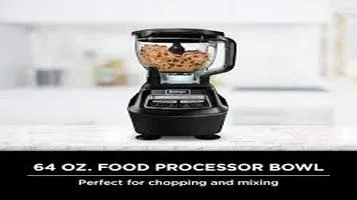Baking Sheet The Unsung Hero of Your Kitchen
A baking sheet, also known as a sheet pan or cookie sheet, is a versatile kitchen tool designed for baking a wide array of foods. Typically made from aluminum or stainless steel, it features a flat, rectangular surface with shallow edges, allowing for even heat distribution and efficient baking. Baking sheets are ideal for cookies, pastries, and roasted vegetables, providing a sturdy platform that prevents spillage. Their non-stick options make for easy food release and effortless cleaning. Available in various sizes, they fit most ovens, catering to different batch requirements. Some models include a raised rim to hold in juices and prevent messes. With its durable construction, a baking sheet is a must-have for both amateur and professional bakers, enhancing the cooking experience with convenience and reliability.

If you spend any time in the kitchen, you know that having the right tools can make all the difference between culinary success and failure. Among the most essential and versatile tools in any kitchen is the humble baking sheet. This unassuming piece of cookware is often overlooked, but it plays a crucial role in a wide variety of cooking tasks. From roasting vegetables to baking cookies, a good baking sheet can make your life easier and your food tastier. Let's dive into a comprehensive review of baking sheets to help you understand why they are indispensable and what features to look for when purchasing one.
Material Matters
When it comes to baking sheets, the material is one of the most critical factors you'll want to consider. Baking sheets are typically made from aluminum, stainless steel, or non-stick coated metal.
- Aluminum: Known for its excellent heat conductivity, aluminum baking sheets ensure even cooking and browning. However, they can be prone to warping at high temperatures and may react with acidic foods, potentially altering the flavor.
- Stainless Steel: While not as conductive as aluminum, stainless steel is highly durable and resistant to warping and rusting. However, it can sometimes lead to uneven cooking due to its lower heat conductivity.
- Non-Stick Coatings: These are great for easy release and simple cleanup. However, the coating can wear off over time, and high heat or metal utensils can damage it. If you go for a non-stick option, make sure it's PFOA-free to avoid any potential health risks.
Size and Thickness
The size and thickness of a baking sheet are also crucial factors. The most common size is the half-sheet pan, typically measuring around 18x13 inches. This size fits comfortably in most home ovens and can accommodate a variety of foods. For smaller ovens or tasks, quarter-sheet pans (9x13 inches) are also available.
Thickness is equally important. Thicker sheets (around 18-gauge or lower) are less likely to warp and provide more even heat distribution. Thinner sheets may be more affordable but often warp under high temperatures and don't offer the same level of performance.
Design Features
Several design features can enhance the functionality of a baking sheet:
- Rimmed vs. Rimless: Rimmed baking sheets, also known as jelly roll pans, have a raised edge that helps contain juices and prevent spills. Rimless sheets are ideal for tasks like sliding baked goods directly onto a cooling rack but are less versatile overall.
- Textured Surface: Some baking sheets feature a textured or dimpled surface, which can promote better airflow and reduce sticking. This can be particularly useful for baking cookies or roasting vegetables.
- Handles: While not common, some baking sheets come with built-in handles for easier maneuverability, especially when wearing oven mitts.
Performance
In terms of performance, a good baking sheet should provide even cooking, resist warping, and be easy to clean. Aluminum sheets excel in even cooking and browning, making them ideal for tasks like roasting vegetables or baking cookies. Stainless steel sheets, while less conductive, offer unparalleled durability and are less prone to warping and rust.
Non-stick options make cleanup a breeze but require more careful handling to avoid damaging the coating. If you frequently bake delicate items like meringues or macarons, a non-stick sheet can be invaluable.
Maintenance and Care
Proper maintenance can extend the life of your baking sheet. Most baking sheets, especially those made of aluminum or with non-stick coatings, should be hand-washed to preserve their integrity. Stainless steel sheets can often be cleaned in the dishwasher, but it's always best to consult the manufacturer's guidelines. Avoid using abrasive cleaners or metal utensils on non-stick surfaces to prevent scratching.
Price and Value
Baking sheets come in a wide range of prices, from budget-friendly options to high-end models. While it can be tempting to opt for the cheapest option, investing a bit more in a high-quality baking sheet can pay off in the long run with better performance and durability. Expect to pay between $10 to $30 for a good quality baking sheet, depending on the material and features.
Conclusion
In summary, the baking sheet is an essential, versatile tool in any kitchen. Whether you're an amateur cook or a seasoned chef, investing in a good quality baking sheet can significantly impact your cooking experience and the quality of your food. When choosing a baking sheet, consider the material, size, thickness, and additional features to find one that best suits your needs. With proper care and maintenance, a good baking sheet can last for years, making it a worthwhile addition to your kitchen arsenal.






